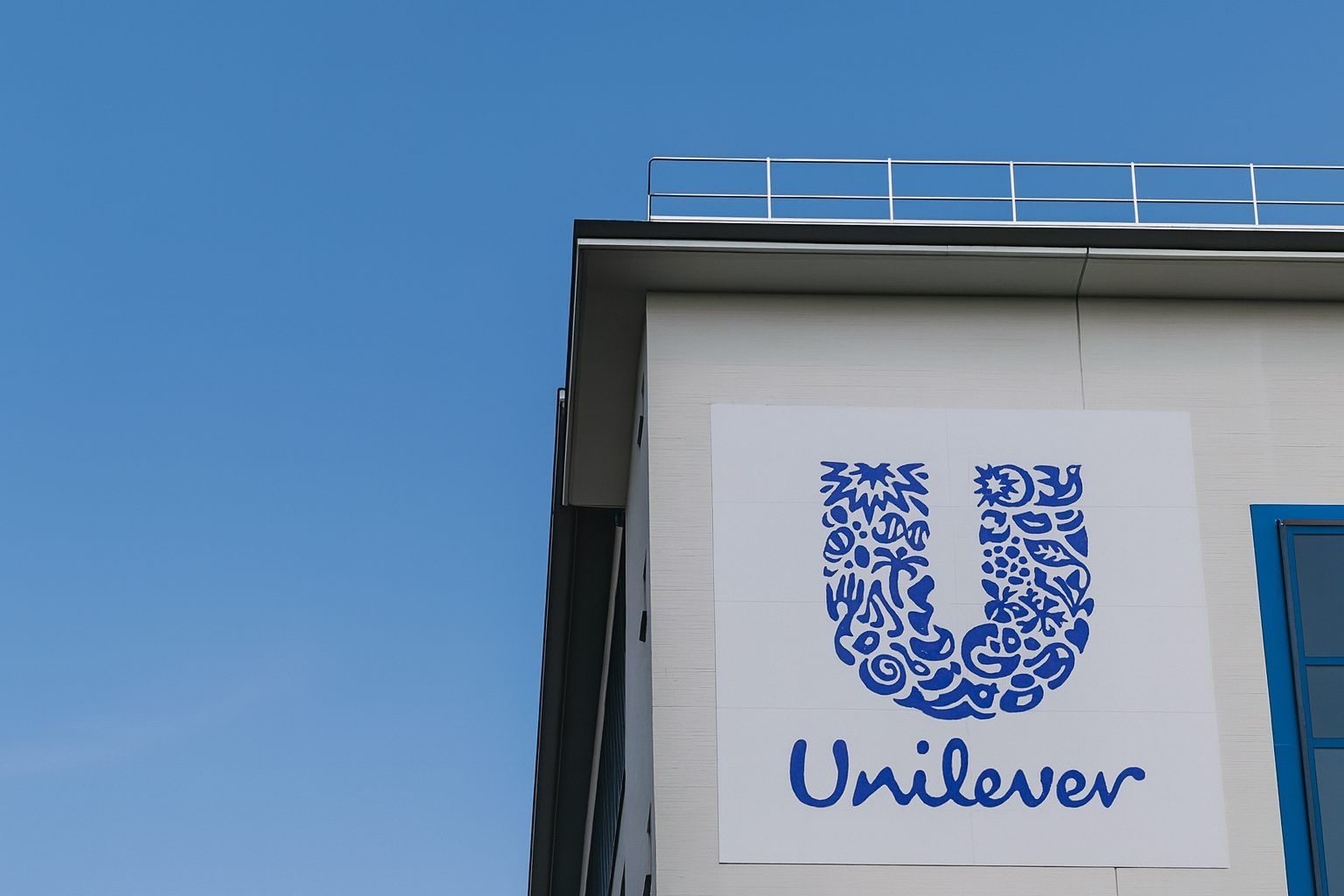Unilever PLC (LON: ULVR; NYSE: UL) heads into the final weeks of 2025 with its investment story dominated by three themes: a looming Magnum Ice Cream Company spin‑off, fresh euro‑denominated bond issues, and a flurry of bullish analyst calls that clash with more sceptical voices.
As of the latest close, Unilever’s London‑listed shares are trading at around 4,520p, barely changed over the past few sessions, while the New York–listed ADR (ticker UL) finished Wednesday, 26 November, at $60.20, down just 0.05% on the day. [1]
Today, 28 November 2025, the spotlight is squarely on new broker commentary and debt‑market signals that investors are treating as a referendum on “new Unilever” post‑ice‑cream.
Where Unilever stock stands today
Share price and valuation snapshot
- London (ULVR): Yahoo Finance data show Unilever closing on 27 November at about 4,520p, with only a marginal move on the day. [2]
- New York (UL): The ADR closed on 26 November at $60.20, after trading in a tight daily range of roughly $60.01–$60.28 and on volume of about 2.2 million shares. [3]
A separate analyst round‑up notes: [4]
- Market cap around £110–111 billion in London and about $110–150 billion in global terms (depending on FX and source).
- Price/earnings ratio ~20x,
- Beta around 0.22, underlining Unilever’s low‑volatility, defensive profile.
On the income side, Unilever continues to lean heavily on its dividend appeal. Recent broker commentary and Unilever’s own disclosures suggest:
- An annualised dividend of roughly £1.52 per share in the UK market – implying a yield in the low‑to‑mid 3% range at current prices. TechStock²+1
- A Q3 2025 dividend of €0.4528 per ordinary share (and $0.5225 per ADR), up 3% year on year, with the latest ex‑dividend date on 6 November 2025 and payment scheduled for 5 December 2025. TechStock²
For many institutions, this mix of steady cash returns, low beta and global consumer‑staples exposure is precisely why Unilever shows up in “defensive compounder” screens.
Fresh analyst calls on 28 November: JPMorgan and Bank of America move in
JPMorgan: target hiked, upside framed at over 25%
The most eye‑catching development today comes from JPMorgan Chase & Co.
In a note highlighted by Defense World, the bank raises its target price on Unilever’s London shares from 5,400p to 5,700p and reiterates an “overweight” rating. [5]
Key points from that report:
- The new target implies about 26% upside from a current price around 4,514p, based on JPMorgan’s reference level. [6]
- The bank argues that the Magnum Ice Cream Company spin‑off and Unilever’s productivity programme are under‑appreciated catalysts for a re‑rating, particularly if margins improve as guided.
JPMorgan’s optimism is notable because the broader broker community is far from unanimous. The same article collates other recent views: [7]
- Jefferies: “Underperform”, target cut to 3,800p.
- Deutsche Bank: “Buy”, target trimmed slightly to 5,050p.
- UBS: “Sell”, target 4,120p.
- Berenberg: “Buy”, target nudged up to 5,570p.
- RBC: “Underperform”, target 3,900p.
Putting those together, MarketBeat data show an average rating of “Hold” on ULVR with an average price target around 4,690p, even as individual targets vary widely. [8]
Bank of America: Buy reiterated, 5,400p target
A separate piece on Insider Monkey, published early today, notes that Bank of America Securities recently reiterated a Buy rating on Unilever and set a 5,400p price target (referencing the London line). [9]
That article also recaps Unilever’s latest Q3 numbers: [10]
- Q3 2025 underlying sales growth (USG) 3.9%, with
- 1.5% volume growth and
- 2.4% price growth.
- Excluding Ice Cream, USG nudges up to 4.0%, with 1.7% volume growth.
- The Power Brands segment excluding Ice Cream grew 4.4%, with volumes up 2.2%.
Bank of America’s stance essentially frames Unilever as a low‑volatility, large‑cap compounder where modest growth plus a dividend and margin improvement can add up to attractive total returns over time.
Rothschild Redburn: higher target into the spin‑off
Earlier this week, Rothschild Redburn also raised its price target on Unilever, from £52.00 to £53.50 (on a per‑share basis, equivalent to roughly 5,350p on the UK line), while maintaining a Buy rating. [11]
Their note emphasises:
- The upcoming demerger of the ice cream business in early December,
- Unilever’s 34‑year streak of consecutive dividend payments with a yield around 3.46%,
- A productivity plan meant to offset stranded costs from the separation. [12]
Taken together with today’s JPMorgan and Bank of America calls, the bullish camp now centres on a thesis of “simpler, higher‑margin Unilever” backed by a long dividend history and structural cost savings.
But not everyone is convinced: UBS stays sceptical
If today’s research notes sound comfortably upbeat, UBS continues to provide the cold shower.
In a detailed piece earlier this week, UBS reiterates a Sell rating on ULVR with a 4,120p target – well below current levels – and questions the market’s enthusiasm around the soon‑to‑list Magnum Ice Cream Company (TMICC). [13]
Highlights of their concerns:
- Ice‑cream consumption per head is falling in several developed markets, especially the US, which accounts for over a quarter of TMICC’s turnover. [14]
- UBS’s survey work suggests roughly 60% of US patients on GLP‑1 weight‑loss drugs have cut back on ice cream, adding a structural headwind to growth. [15]
- The bank doubts TMICC can reliably hit its 3–5% organic sales growth ambition in the medium term and expects lumpy margin improvement, not a smooth glide path. [16]
Although those critiques are aimed at Magnum, they matter for Unilever shareholders: UBS is essentially saying the spin‑off may not deliver enough margin uplift or growth acceleration at “new Unilever” to justify today’s multiples.
Debt markets vote with real money: new Unilever and Magnum bonds
Unilever Capital’s euro bonds: stabilisation period ends
On the funding side, HSBC Bank plc issued a Post Stabilisation Notice today confirming that no stabilisation activity was required in the recent Unilever Capital Corporation euro bond offering. [17]
Key terms of that deal:
- Issuer: Unilever Capital Corporation,
- Guarantors: Unilever PLC and Unilever United States, Inc.,
- Two tranches:
- €850 million 2.875% notes due 31 October 2032, priced at 99.234,
- €800 million 3.5% notes due 31 October 2037, priced at 99.961. [18]
The stabilisation window ran from 28 October to no later than 28 November 2025. The fact that no stabilisation was needed suggests the bonds traded without the kind of disorderly selling that might have forced the managers to intervene.
For equity holders, this points to solid credit‑market appetite for Unilever risk at relatively low coupons, supporting the argument that the group’s balance sheet remains a competitive advantage even as it restructures.
Magnum Ice Cream Company’s €3 billion debut bond
Just as important is what’s happening on the Magnum side.
Earlier this week, The Magnum Ice Cream Company (TMICC) – soon to be demerged from Unilever – completed a €3 billion debut bond issue via Magnum ICC Finance B.V., structured in four €750 million tranches maturing between 2029 and 2037, with coupons ranging from 2.75% to 4.0%. [19]
Key details:
- The order book was over seven times oversubscribed,
- The notes sit under an €8 billion Euro Medium Term Note programme,
- Ratings: BBB (S&P) and Baa2 (Moody’s),
- Proceeds will support general corporate purposes and facilitate the demerger from Unilever. [20]
The heavy oversubscription and solid investment‑grade ratings support the narrative that Magnum is being launched as a credible, stand‑alone global ice‑cream leader, not a financial orphan being pushed out of the nest.
The Magnum spin‑off: key dates and what changes for “new Unilever”
Unilever’s own demerger microsite lays out a precise timetable for the separation of The Magnum Ice Cream Company: [21]
- 1 July 2025: TMICC began operating as a standalone business within the group.
- 2 October 2025: Shareholder circular published.
- 4 November 2025: US registration statement filed with the SEC.
- 6 December 2025:Demerger completion expected.
- 8 December 2025:TMICC listing and trading expected to commence in Amsterdam (with cross‑listings in London and New York).
Post‑spin, Unilever plans to:
- Retain a stake of under 20% in TMICC, to be sold down over time to fund separation costs and maintain capital flexibility. [22]
- Report Ice Cream as a discontinued operation from Q4 2025.
- Execute a share consolidation so that per‑share metrics (EPS, DPS, share price) remain broadly comparable before and after the demerger. [23]
Strategically, the transformation is clear:
- Unilever becomes a more focused Beauty & Wellbeing, Personal Care, Home Care and Nutrition group,
- Seasonal and cyclical exposure declines (no more summer‑skewed ice‑cream earnings),
- Management is explicitly aiming for a “structurally higher margin profile” once stranded costs are offset by its €800 million productivity programme. [24]
2025 performance so far: modest growth, firm margins
Unilever’s first‑half and third‑quarter updates provide the fundamental backdrop for today’s price targets.
From the H1 2025 results: [25]
- Underlying sales growth 3.4%, split between 1.5% volume and 1.9% price,
- Turnover €30.1 billion, down 3.2% due mainly to negative FX (‑4.0%) and disposals (‑2.5%),
- Gross margin 45.7%,
- Underlying operating margin 19.3%, slightly lower year on year,
- Free cash flow €1.1 billion, held back by separation costs and working capital,
- Productivity programme ahead of plan, targeting €800 million of savings, with around €650 million expected by year‑end 2025.
From the Q3 2025 overview: [26]
- Group USG 3.9%, with 1.5% volume and 2.4% price,
- Excluding Ice Cream, USG 4.0% and volumes 1.7%,
- Developed markets growing around 3.7%, emerging markets 4.1%, with improving trends in China and Indonesia,
- Full‑year 2025 guidance maintained: 3–5% USG and an improvement in underlying operating margin versus 2024.
In plain English: Unilever is growing modestly but steadily, with a strong gross margin and some FX headwinds, while it spends money to carve out ice cream and fund premium innovation in core brands.
Who is buying the stock? Institutional flows point to quiet accumulation
A MarketBeat summary published on 27 November highlights that several institutional investors have been adding to Unilever this year: [27]
- Coldstream Capital Management increased its stake by 59.5% in Q2, adding 7,159 shares to reach 19,201 shares worth about $1.17 million at the time of filing.
- Wellington Management Group added 3.42 million shares, taking its holding to over 28.1 million shares.
- BNP Paribas Financial Markets lifted its position by over 760%.
- Sustainable Growth Advisers increased its holding by 164%.
In total, roughly 9.7% of Unilever’s equity is owned by the institutions tracked in that report, and the ADR line carries an average “Moderate Buy” rating with a consensus target around $73, versus the current ~$60 share price. [28]
That doesn’t mean the stock is universally beloved – but it does suggest that long‑term, yield‑oriented investors see Unilever as reasonably priced insurance against macro volatility.
Key risks investors are watching
Today’s news doesn’t remove the downside scenarios; it just sharpens them. Analysts and credit agencies flag several structural risks: [29]
- Spin‑off execution risk
- Integration of new capital structures for both Unilever and TMICC,
- Delivery of promised cost savings without operational disruption,
- The market’s initial verdict on TMICC’s standalone valuation and how that feeds back into ULVR/UL sentiment.
- Health and nutrition trends (GLP‑1 effect)
- Weight‑loss drugs and changing consumer habits could structurally hit demand for indulgent foods, with UBS data already suggesting sizable cutbacks in ice‑cream consumption among US GLP‑1 users.
- Commodities and FX
- Exposure to cocoa, sugar and emerging‑market currencies has already knocked roughly 6% off turnover on translation this year, and these pressures can move suddenly. TechStock²+1
- Emerging‑market growth
- India and other key markets remain crucial to the bull case; any prolonged slowdown in local volumes could undermine targets for 4–6% USG from 2026 onward. [30]
- Governance and brand independence issues
- Recent news such as the resignation of Ben & Jerry’s co‑founder Jerry Greenfield over concerns about brand independence shows that Unilever’s social‑mission positioning continues to be a flashpoint, which can affect reputational risk and, in extreme cases, sales. [31]
What today’s developments mean for Unilever PLC stock on 28 November 2025
Putting the day’s news together, a few conclusions emerge for anyone tracking Unilever PLC stock today:
- Analysts are pulling in different directions – but the centre of gravity is drifting higher.
- JPMorgan’s new 5,700p target and Bank of America’s 5,400p call push the bullish envelope, while Rothschild Redburn’s £53.50 target reinforces the idea that “new Unilever” could justify a premium multiple if execution goes well. [32]
- UBS and Jefferies, however, keep the bear case alive, particularly around Magnum’s growth and the valuation being asked of a mid‑single‑digit grower. [33]
- Debt markets are voting “yes” – for both Unilever and Magnum.
- Unilever Capital’s 2032 and 2037 euro notes and TMICC’s €3 billion multi‑tranche debut were both well received, with no need for bond‑price stabilisation and heavy oversubscription on the ice‑cream side. [34]
- That suggests credit investors are comfortable with the group’s leverage and separation plan.
- Operationally, Unilever is doing what a mature staples giant is supposed to do.
- Deliver 3–4% organic growth,
- Protect or gently expand margins via productivity,
- Keep dividends rising at low single digits and maintain a high payout,
- Prune the portfolio to tilt towards higher‑margin personal care and beauty categories. [35]
- For equity holders, the next few weeks are pivotal.
- The 6–8 December Magnum demerger and listing will finally put a market price on a business that has been the subject of years of debate. [36]
- The way both TMICC and post‑spin Unilever trade in the aftermath is likely to set the tone for 2026 price action.
As always, any decision to buy, hold or sell Unilever shares depends on your own financial situation, risk tolerance and time horizon. The information above reflects publicly available data and analyst commentary as of 28 November 2025 and is not personalised investment advice.
References
1. finance.yahoo.com, 2. finance.yahoo.com, 3. twelvedata.com, 4. www.defenseworld.net, 5. www.defenseworld.net, 6. www.defenseworld.net, 7. www.defenseworld.net, 8. www.defenseworld.net, 9. www.insidermonkey.com, 10. www.insidermonkey.com, 11. www.investing.com, 12. www.investing.com, 13. www.proactiveinvestors.com, 14. www.proactiveinvestors.com, 15. www.proactiveinvestors.com, 16. www.proactiveinvestors.com, 17. www.investegate.co.uk, 18. www.investegate.co.uk, 19. www.stocktitan.net, 20. www.stocktitan.net, 21. www.unilever.com, 22. www.unilever.com, 23. www.unilever.com, 24. www.unilever.com, 25. www.unilever.com, 26. www.unilever.com, 27. www.marketbeat.com, 28. www.marketbeat.com, 29. www.proactiveinvestors.com, 30. www.investing.com, 31. www.investing.com, 32. www.defenseworld.net, 33. www.proactiveinvestors.com, 34. www.investegate.co.uk, 35. www.unilever.com, 36. www.unilever.com








